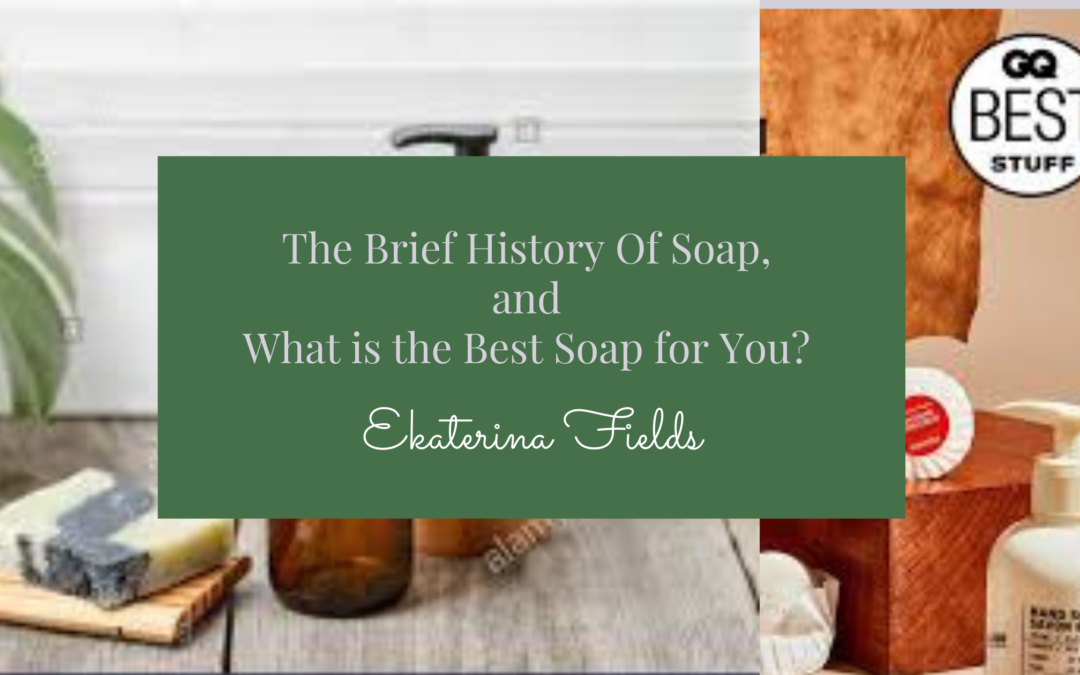20th Century: From Bar Soaps to Liquid Soap pumps
In the 20th century most households in the world transitioned from using old fashioned bar soaps  to using liquid hand soap pumps made, off course, of plastic. Why did they become so popular? Better fragrance, a cleaner sink, a more hygienic way to soap hands by multiple users, in the homes who have visitors or in public bathrooms.
to using liquid hand soap pumps made, off course, of plastic. Why did they become so popular? Better fragrance, a cleaner sink, a more hygienic way to soap hands by multiple users, in the homes who have visitors or in public bathrooms.
Manufacturers competed with each other first by scent. Every brand from Sainsburys to Yves Saint Laurent produced  perfumed liquid soap pumps. But soon people realised that perfumed liquid soaps were very drying for the hands.
perfumed liquid soap pumps. But soon people realised that perfumed liquid soaps were very drying for the hands. 
A new fashion was born, whereby every manufacturer made sets: a liquid soap pump could now be purchased and displayed in your bathroom with a matching hand lotion pump!
Plastic, Plastic, Plastic. Billions of these pumps are now in landfills and oceans.
But then an era or recycling hit. It hit especially hard in European Countries, and in some areas of the United States and Canada. People began to think just how many used plastic soap pumps their household puts in the landfill every month, every year? Recycling pumps is not straightforward even today. The bottles – if they can be separated from the pump itself – can usually be recycled. But not the pumps. And so people began looking for alternatives.
Two alternatives to plastic liquid soap pumps exist today. They are newly re-born bar soaps, and refillable glass liquid soap pumps with a metal pump mechanism.
21st Century: Back to Bar Soaps+
Over the last two decades the bar soaps became amazing. Gentle on the hands, in lovely colours and various natural flavours from mint to lemon or green tea, or coconut, or damascus rose…. Anyone can find the soap they like, or, actually, love. Many bar soaps are also inexpensive compared to liquid soap pumps.
For years, I used Faith in Nature brand, which is delivered by Ocado among other sources. I love it that they come in a brown paper box. No plastic. Aloe Vera, Coconut, Grapefruit have been my favourites.  But most bar soaps can become a bit shabby looking with use, with crack lines developing along them. The quality is still great, the soap in gentle on the hands, but would you make your guests use it? What if it’s a house party and you are trying to present your home in the very best light?
But most bar soaps can become a bit shabby looking with use, with crack lines developing along them. The quality is still great, the soap in gentle on the hands, but would you make your guests use it? What if it’s a house party and you are trying to present your home in the very best light?
A solution to the “ageing” soap bar look is replacing them frequently, or replacing them entirely with glycerine soap.
 It is a wonder of environmental household, and one that looks perfect throughout use, no cracks, no lines, it just diminishes in size, staying lovely and clear. And the shades are a pleasure to chose from. I use the lovely natural green glycerine hand soap bar in my kitchen, green just like the trees outside, bright colours for my children and dark burgundy for me – that’s my favourite colour.
It is a wonder of environmental household, and one that looks perfect throughout use, no cracks, no lines, it just diminishes in size, staying lovely and clear. And the shades are a pleasure to chose from. I use the lovely natural green glycerine hand soap bar in my kitchen, green just like the trees outside, bright colours for my children and dark burgundy for me – that’s my favourite colour.
Glass and Metal Liquid Soap Pumps
They are the most recent development in the soap market. I have purchased mine from Amazon. The bottle is glass, the pump is metal, and the only bit of plastic is the short clear tube inside. My bathroom is white and amber, so I have chosen an “amber” colour glass pump to stand on my white sink. It looks lovely. Do you want yours blue, maybe? Or would you chose a Downton Abbey like crystal glass soap pump? Lovely.


My next search will be for a perfect liquid soap refill. Those pouches are, sadly, plastic, but they are made with much much less plastic that a whole new liquid soap pump, and they are recyclable. Which criteria will I use? I am curious whether all of the pouches are made with grade 7 plastic (the worst for the environment, and for recycling). I would like to see lower numbers, the lower the better. And I will be ready for when biodegradable refill packaging enters the market.
*Please see my article Refill! Zero-waste Lifestyle on ideas of compostable and biodegradable plastic-free refills!
